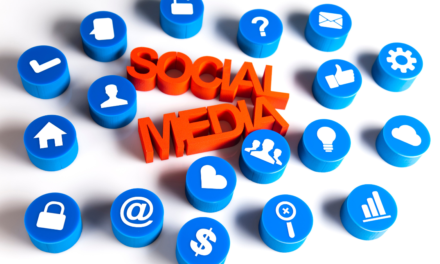The changing arena of marketing automation is zeroing in on a more customer-centric approach moving into the new year, with a focus on customer data platforms and gaining insights into first-party data to truly offer the personalization and on-target messaging that automation promises. There are, however, different levels of marketing automation implemented in organizations in terms of capabilities, resources, tools, and internal skills. While some are just getting their feet wet with email marketing, others are doing more sophisticated, multichannel campaigns across multiple touchpoints and fully using all the journey-building capabilities in the marketing automation platforms.
Among this year’s marketing automation highlights are real-time offers for customers based on specific criteria, interactive experiences with chatbots, and data analytics from different marketing campaigns to assist with budgets. Most programs today provide basic data to look at metrics to understand if campaigns are effective in email marketing and related areas. The key players in the industry are consistently offering more effective automation tools. But what really counts as success factors and drivers in this permanently evolving sector?
The Marketing Automation Year in Review
“When you think about what is driving digital marketing today, it is how you manage your customer data,” says Noah Elkin, research director at Gartner. Customer data and its collection, storage, and usage have driven much of the marketing story in 2018, especially since the implementation of the General Data Protection Regulation (GDPR) in May. “The aim of the GDPR is to protect all [European Union] citizens from privacy and data breaches in today’s data-driven world,” according to eugdpr.org. Marketers operating in the global marketplace had to revisit their practices and make sure they are GDPR-compliant, which led to an onslaught of emails asking people to confirm that they still wanted to receive communications from brands.
But customer data management goes beyond GDPR concerns. “We talk about marketing automation in terms of multichannel marketing hubs, and the hub aspect of it is twofold,” says Elkin. “One is all of the different channel execution capabilities that are incorporated into these large and growing multichannel marketing platforms. The other is the customer data hub and how you manage that to derive insights within one of these multichannel marketing platforms.”
However, when it comes to incorporating predictive intelligence into marketing automation tools, he points out that the industry is in the early stages of a long game, with room for advancement. Predictive intelligence also plays a role in personalization for social media marketing, in which marketing automation tools have the ability to drive insights from the customer data hub into the right segments and personas to engage. This allows the creation of different campaigns that automate engagement with the right channel, audience, and/or moment using marketing automation platforms.
Jeffrey Vocell, senior manager of product marketing at HubSpot, shares similar views with two primary insights: “Make your automation customer-centric rather than company-centric. This helps reduce friction in your process and optimizes the customer experience, but shouldn’t control the entire customer experience. Second, businesses can no longer just rely on automating some aspects of marketing. Automation can apply across any customer-facing teams (such as sales and support), and having a holistic view of all this automation is better for your customers and more efficient for your business.”
While the marketing automation landscape includes big names—such as Salesforce, Adobe, Oracle, and IBM—that drive a lot of the innovation, emerging companies are trying to make their mark as well. “We see—as the emphasis on customer data and insights becomes more important—there is this rise of the customer data platform for managing first-party customer data,” says Elkin. “There is a huge host of relatively small startup companies in that space that are starting to have an impact.”
A Look Ahead at Marketing Automation
Forrester’s “Predictions 2019: B2B Marketing And Sales” says B2B marketers will embrace customer data platforms in 2019, estimating that more than 70% will forego data lakes for the newer management platforms. Additionally, Forrester predicts that a third of marketers will build account-based marketing programs on their existing automation platforms.
AI is also on Forrester’s radar. The report contends that 20% of marketing platforms will use AI to optimize midcycle engagement. Elkin also believes we will continue to see greater advancements in terms of AI-driven/machine learning-driven customization with functionality that incorporates into these platforms and a growing comfort on the end users’ side in terms of experimenting with it to benefit their campaigns. “How can that affect your ability to deliver more personalized, targeted, engaging experiences to your customers? How can you use the capabilities that are incorporated into [your] tool … to better identify who your customers are, what they want, when they want it, and what channel is the right one to deliver the message that you want to deliver and they want to receive?” Elkin asks.
Sean Brady, president of Emarsys Americas, agrees that customers will lead the conversation on marketing automation. “Customers now determine where and when interactions take place, including the devices and channels. They have a much greater say in deciding how their interactions will go, who owns that data, and how marketing automation will evolve in 2019. We will see a further evolution of how data is collected and utilized, in particular first-party data.”
Since first-party data is collected directly from customers, it is the highest quality data for any marketing automation solution to work with, including direct app or web-based interaction with a brand as well as subscription and social data. Whether via dynamic advertising on social media channels or survey feedback forms on a newsletter, the opportunities to amass first-party data are plenty. And this information is integral to campaign sequencing, testing and targeting, and other marketing automation needs. But in the age of GDPR, it needs to be handled carefully.
“Each day, 2.5 quintillion bytes of data are generated in the digital world. The brands that capture that data and gain permission from customers to use it will find the most success. We will see greater emphasis placed on methods of data collection across websites, email, mobile apps, and social channels. We will also see an increase in solutions that enable businesses to interact more effectively with customers,” Brady says.
The marketing automation sector clearly has much to look forward to in terms of the functionality platforms can offer to use customer data as well as improve how data is collected, stored, and leveraged. 2019 appears to promise more enhancements with the improved integration of other applications and AI-powered campaigns implemented across web, mobile, and social avenues.






